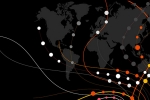In the wake of the major corporate scandals of the early 2000s, regulatory measures aimed at bolstering corporate governance and accounting standards were swiftly implemented. However, despite these efforts, the bursting of the housing bubble in the United States triggered a Global Financial Crisis (GFC), and the risk management function in the financial sector had much to answer for.
The robust regulatory reforms that have been enacted across the global financial sector since then – from the establishment and strengthening of the European Supervisory Authorities to the Dodd-Frank Act in the US, to name just a few – have largely shielded the world from another similar meltdown.
However, there is no denying that the financial sector, and the asset and wealth management (AWM) industry in particular, are currently facing a period of severe macroeconomic and geopolitical stress and uncertainty riddled with all sorts of traditional and novel risks. In this fractured world, it has never been so vital for asset managers to adopt a proactive, forward-thinking and principles-based approach to risk management.
This report seeks to provide stakeholders within the AWM industry, with an overview of emerging novel risks alongside the risk management tools needed to not only survive in adversity, but thrive by embracing and viewing risks as opportunities.
Best practices amidst emerging and resurgent risks
Traditional risks – such as market, credit and liquidity risks – are resurging in the new macroeconomic context of higher-for-longer interest rates. However, these risks are now joined by a host of novel risks that require risk managers to be ever-more vigilant:
On a global level, equities experienced unparalleled volatility and significant declines during the COVID-19 pandemic, and the market was subsequently subjected to additional turmoil due to the Russian invasion of Ukraine, the advent of inflation, the monetary tightening policies, and concerns over a looming global recession. At the close of 2022, the Standard & Poor’s (S&P) 500 Index had its worst annual performance since the GFC, with a total return of -18.1%.
As the risk landscape becomes more complex, the funds industry needs to adopt a proactive, principles-based approach to risk, rooted in the Association of the Luxembourg Fund Industry (ALFI)’s risk management best practices for investment funds’ senior management and board members:
- Optimising growth without exposing the organisation to undue risk;
- Demonstrating due diligence in daily management;
- Promoting proactive management and early identification of risk;
- Increasing accountability and responsibility in the organisation;
- Providing independent input and a challenge to the portfolio management function.

In addition to adopting this approach, a wide set of tools is at risk managers’ disposal.
While the Value-at-Risk (VaR) approach is widely used, its limitations are well known and it has largely become a mere box-ticking exercise. Its original purpose – namely, to highlight how a portfolio is exposed to market risk in a given time with a strong capacity to compare them with peers, benchmark or other portfolios etc. – seems to have been forgotten.
The stress test, on the other hand, came to the fore in the post-GFC era as the losses experienced by many UCITS funds during the crisis far exceeded those estimated by common risk metrics. The main rationale behind the stress test is to prepare for the worst possible scenario. ManCos use the stress test to assess how vulnerable their funds are to historical and hypothetical scenarios that could have a negative impact.
However, despite its handiness, even the stress test may not be sufficient to adequately prepare for and anticipate risks. Although dramatic maximum drawdowns of the major stock indices, crossing the 60% threshold, have already been recorded over the last two decades (cf. table below), the long period of near-zero interest rates might have made some industry players complacent.
Maximum drawdowns of stock indices

Note: *While the Russia-Ukraine Conflict is ongoing, our analysis considered September 1, 2023 as a cutoff date when considering stock indices’ performance.
Sources: PwC Global AWM & ESG Research Centre, Wall Street Journal, ECB
This is where reverse stress testing comes in.
Unlike standard stress tests, a fund undergoing a reverse stress test starts off in a position where the risk manager asks what is the level of loss that would be critical.
The figure below highlights the general trajectory of a reverse stress test:

The most recent edition of PwC’s Global Risk Survey defines ‘Risk Pioneers’ as institutions that are “underpinned by strategic enterprise-wide resilience and guided by a human-led, tech-powered approach,” and which reframe “risk as a value creation opportunity.”
Asset managers should rethink their risk management processes, go beyond regulatory compliance and effectively emerge as ‘Risk Pioneers.’
To do so, they should reflect deeply on the current times and ask themselves pertinent questions:
- What are the shocks that would be very difficult to accept and would cause a deep and lasting impact on funds and portfolios?
- How novel are these shocks and are they interconnected with other, more traditional types of risks?
- What is the likelihood that such shocks would occur, and what are the potential triggers?
- Is there a plan or processes in place to ensure proper risk mitigation and management?
This report seeks to provide stakeholders with a starting point to answer these questions.
From Compliance to Competitive Advantage
Risk and Performance in a Fractured World
Contact us
Olivier Carré
Deputy Managing Partner, Technology & Transformation Leader, PwC Luxembourg
Tel: +352 49 48 48 4174
Benjamin Gauthier
Advisory Partner, Risk & Compliance Leader, PwC Luxembourg
Tel: +352 49 48 48 4137
Partner, Global AWM Market Research Centre Leader, PwC Luxembourg
Tel: +352 49 48 48 2191









